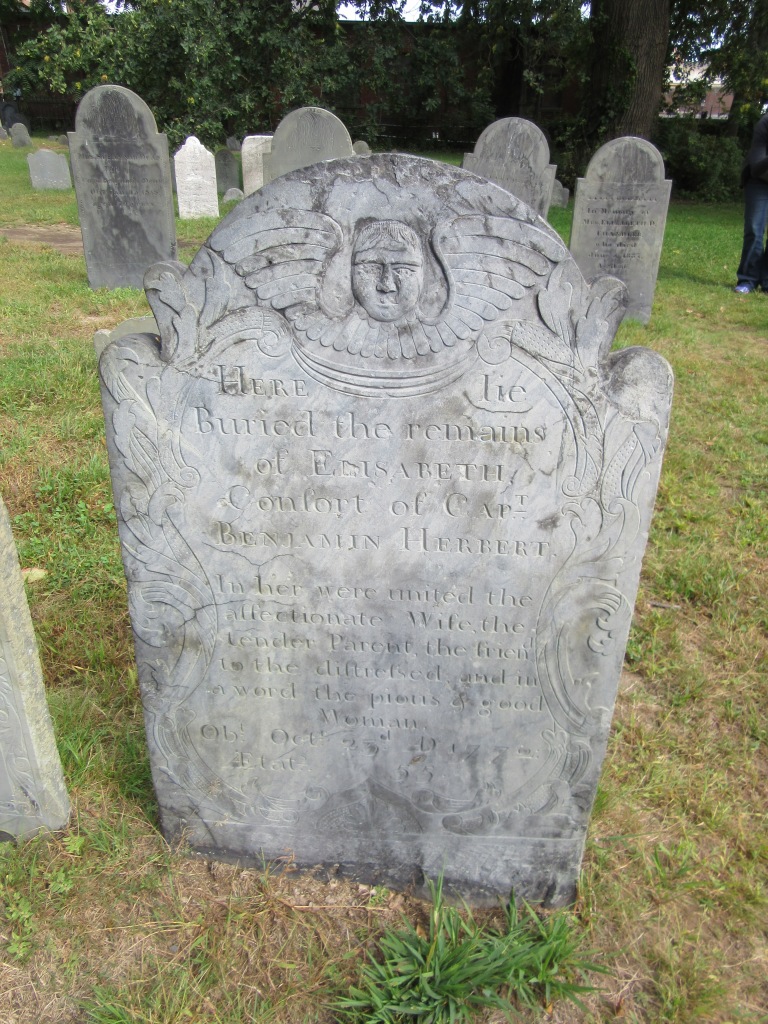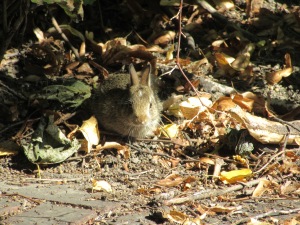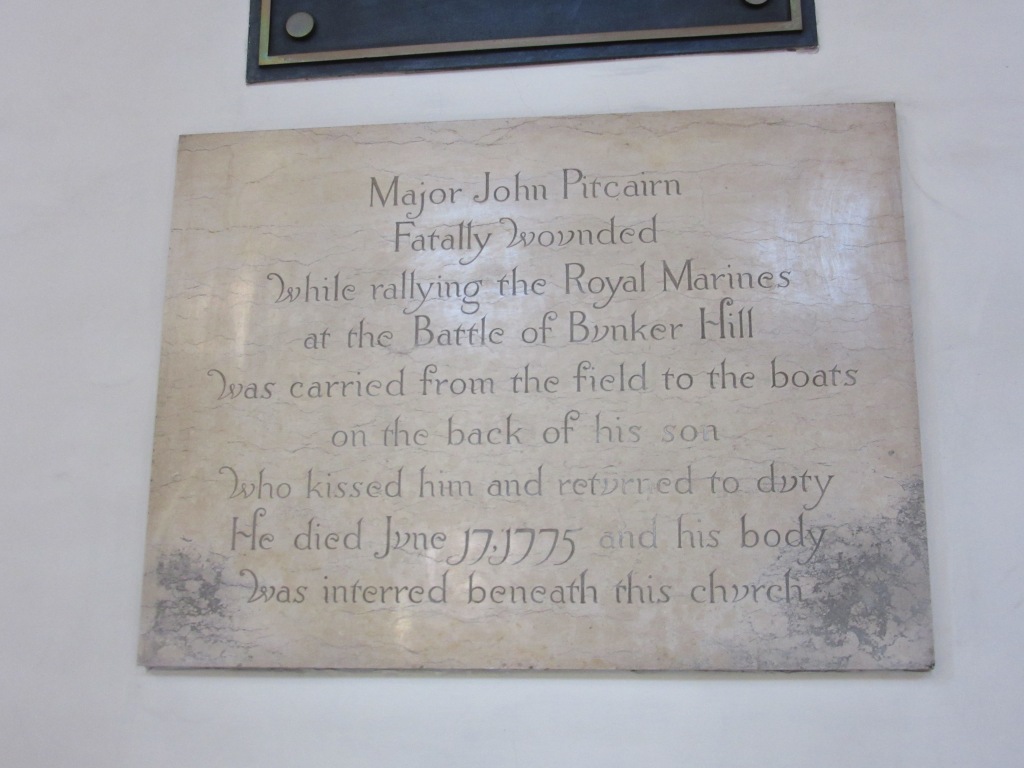

Posted in Dead Men Do Tell Tales, In the church... | Tagged american revolution, boston, cause of death, massachusetts, occupation, old north church, revolutionary war | Leave a Comment »

Posted in Dead Men Do Tell Tales, In the church... | Tagged boston, cause of death, kings chapel, massachusetts, navy, occupation, sailor, world war ii, wwii | Leave a Comment »


Posted in Dead Men Do Tell Tales, In the church... | Tagged boston, clergy, kings chapel, massachusetts, occupation | Leave a Comment »
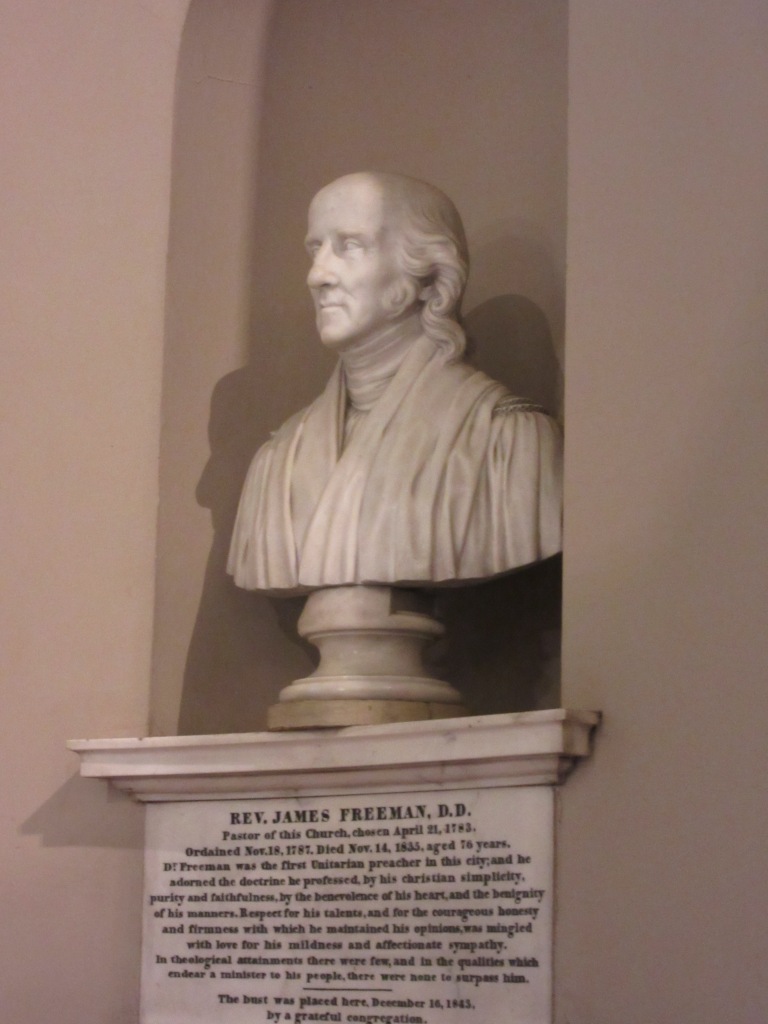

Posted in Dead Men Do Tell Tales, In the church... | Tagged boston, clergy, kings chapel, massachusetts, occupation | Leave a Comment »
In the family cemetery on the Rebecca Nurse Homestead, there is a newer stone in the colonial style for George Jacobs, Sr. In documents regarding the Salem Witch Trials, he is described as an elderly (late 70s/early 80s) English colonist and farmer who used canes for mobility. During the 1692 Salem Witch trials, the afflicted girls, including his servant Sarah Churchill, accused Jacobs, his son George Jr., his daughter-in-law Rebecca, and granddaughter Margaret of being witches. George Jr. managed to evade arrest by leaving the Salem area. Margaret Jacobs confessed to witchcraft while being examined by the magistrates, naming her grandfather as another witch. Though Margaret later recanted her testimony and was in fact acquitted, her grandfather was tried, convicted, and sentences to die by hanging.
The executed witches were barred from burial in sacred ground and probably tossed in a common pit near the gallows, but Salem tradition has long held that some relatives returned under the cover of night to retrieve remains and bury them in secret. The Jacobs descendants claimed to have found George Sr.’s grave on the family farm in 1864. In 1950, developers discovered the grave while building on the property, and the bones were exhumed. While they cannot be verified as belonging to George Jacobs, Sr., the bones were those of an elderly man fitting his description. In 1992, 300 years after the trials, the bones were reinterred in the Nurse family cemetery on the Rebecca Nurse homestead in a 17th century style coffin.

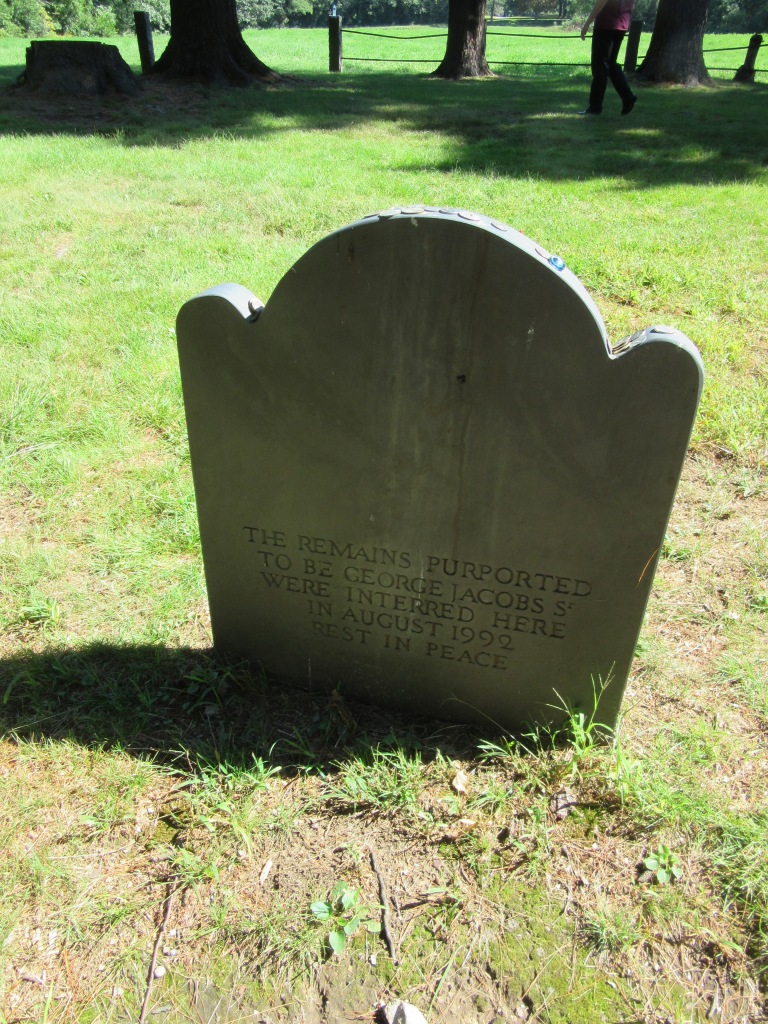
Posted in Dead Men Do Tell Tales | Tagged cause of death, danvers, massachusetts, salem, salem witch trials | Leave a Comment »

Posted in Dead Men Do Tell Tales | Tagged canongate kirkyard, child, edinburgh, occupation, scotland, wordless wednesday | Leave a Comment »
Did you know there is a water fountain just outside Edinburgh Castle dedicated to those executed as witches in the 16th and 17th centuries? The “Witchcraft Acts” codified witchcraft as a criminal offense. In 1541, The Act against Conjurations, Witchcraft, Sorcery and Enchantments defined witchcraft as a felony, punishable by death and forfeiture of property to the state. The 1563 Act further defined not just the practice of witchcraft, but the consultation of a witch, as punishable by death. King James VI (later James I of England) demonstrated a particular obsession with witches, even publishing a book, Daemonologie, and participating in the interrogation of accused witches. He took that interest with him when he assumed the English throne. In 1604, another law was passed that further bolstered prosecution of witches: An Act against Conjuration, Witchcraft and dealing with evil and wicked spirits, and hundreds of witches would be tried and executed.



Posted in Somewhere other than a cemetery | Tagged cenotaph, edinburgh, edinburgh castle, scotland, witch, witch trials | Leave a Comment »

The British Museum had a few Roman tombstones when I visited in 2017. It’s hard, when viewing them, not to think about how many more there must have been that were lost to history. Seeing them in a museum, protected and preserved, allows us a glimpse into history, but also removes them from the area of the graves they were created to mark.
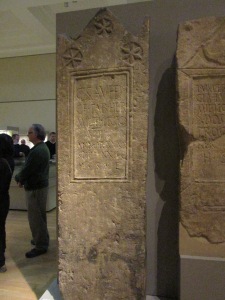


Posted in Somewhere other than a cemetery | Tagged british museum, england, great britain, latin, museum, roman | Leave a Comment »


